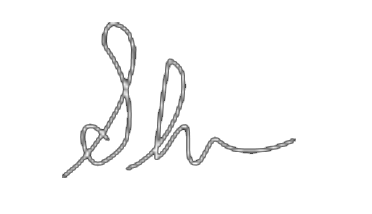
09.29.2016 Photo by Cpl. Kyle Talbot. Via Defense Visual Information Distribution Service
The Marine Corps has a complicated history with women. On the one hand, the Marines accept fewer women into its ranks than any branch of service. On the other, when a mission requires specialized gender-suited tasks not suitable for men, the Marines won’t hesitate to enlist their female marines for the job.
In the early 2000s, the Marine Corps became the first branch to create teams of women dubbed Task Force Lioness. The Lioness team’s mission was to identify and mitigate issues created by insurgents in Afghanistan by primarily searching females. At the time, insurgents were using Afghan women to smuggle goods for terrorist activity. Since women were not allowed to interact with men outside their families they became easy targets for insurgents.
By 2005, both the Army and the Marines had Lioness teams. Eventually their duties were handed over to Afghan women and in 2009 the Marines created Female Engagement Teams to expand on TFL’s mission. New tasks included, “searching women at polling sites and checkpoints, running medical clinics, distribution of over-the-counter medicines, distribution of humanitarian aid, and conducting engagements in Afghan homes.” (Beals, Master of Military Studies Research Paper, 2010, pg 12)
“The FET was on a volunteer basis,” said 1st Lt. Jennifer Mozzetta, a FET’s assistant team leader in an interview with MilitaryTimes.com. “[We] passed the word that we are looking for females that are very engaged, have a lot of initiative, who want an opportunity to go out and do something different, and want to better themselves professionally.”
 Because of the success of the Lioness teams and the FETs, Special Operations Command recruited and trained women for a new team dubbed, Cultural Support Teams or CSTs. CSTs further expanded on the prior missions by including combat operations training in order to “deploy alongside Green Berets on Village Stability Operations—then a central part of counterinsurgency efforts — and go out at night on special ops missions with the ground-pounders of Ranger Regiment” (Lemmon, Ashley’s war: the untold story of a team of women soldiers on the Special Ops battlefield. 2015, para. 12).
Because of the success of the Lioness teams and the FETs, Special Operations Command recruited and trained women for a new team dubbed, Cultural Support Teams or CSTs. CSTs further expanded on the prior missions by including combat operations training in order to “deploy alongside Green Berets on Village Stability Operations—then a central part of counterinsurgency efforts — and go out at night on special ops missions with the ground-pounders of Ranger Regiment” (Lemmon, Ashley’s war: the untold story of a team of women soldiers on the Special Ops battlefield. 2015, para. 12).
The VBC has had members of these teams talk at our events, including Rachel Washburn who was featured on an episode of our podcast, Truth About War. You can listen to Rachel’s story HERE.
The effectiveness of TFLs, FETs, and CSTs has been well-documented and though they have been suspended due to the drawdown of troops in the Middle East, they are eventually capable of being utilized anywhere.
“I believe that the FET not only broadens capabilities but reach out to populations we’ve never been able to reach out to before,” said Mozzetta. “You open the doors to access information, building relationships … I think that applies anywhere.”
Tune in to The Scuttlebutt this week as we continue our six-part series focusing on each branch of the military. Next up is the Marine Corps! We will be joined by Marine Corps veterans, James Martin, Haya Eason, and Josh Cannon to find out what makes the Marine Corps so special. This and our Mail Call, Headlines, and Scuttlebutt. Hope to see you there!

https://www.marines.mil/News/News-Display/Article/610185/us-marines-set-the-example-with-fet/
https://www.armyupress.army.mil/Journals/NCO-Journal/Archives/2019/October/Female-Engagement-Teams/
VBC’s tiktok with Ray Amelio
https://vm.tiktok.com/ZMJuyqxhj/
Follow the VBC on tiktok: https://www.tiktok.com/@veteransbreakfastclub
The Military is Developing a ‘Close Combat Assault Ration’ Up to 40% Lighter than an MRE
SEAL Team 6 rescues American hostage in Nigeria
Marines Fire Their Biggest Gun
https://www.military.com/video/marines-fire-their-biggest-gun
The 12 coolest and best jobs in the Marine Corps (according to Marines)
Register for Pittsburgh Vets Storytelling Project with Pittsburgh Public Theater and What a Veteran Looks Like: https://us02web.zoom.us/webinar/register/WN_nKRbDO3gQ0CYJA7hnbxqzA
Full Marine Corps Birthday Video: https://www.youtube.com/watch?v=oAjz7U7uZPw


